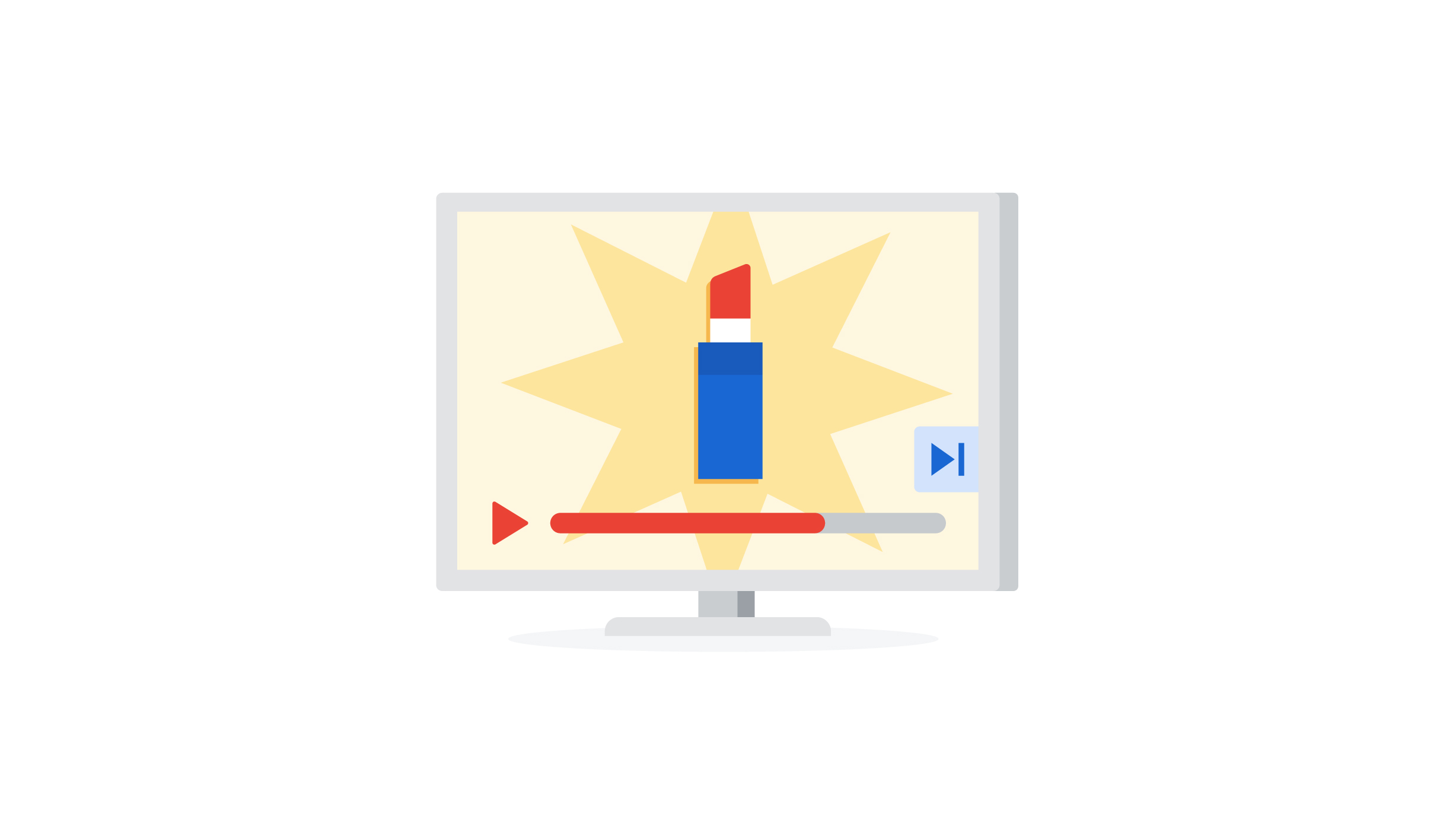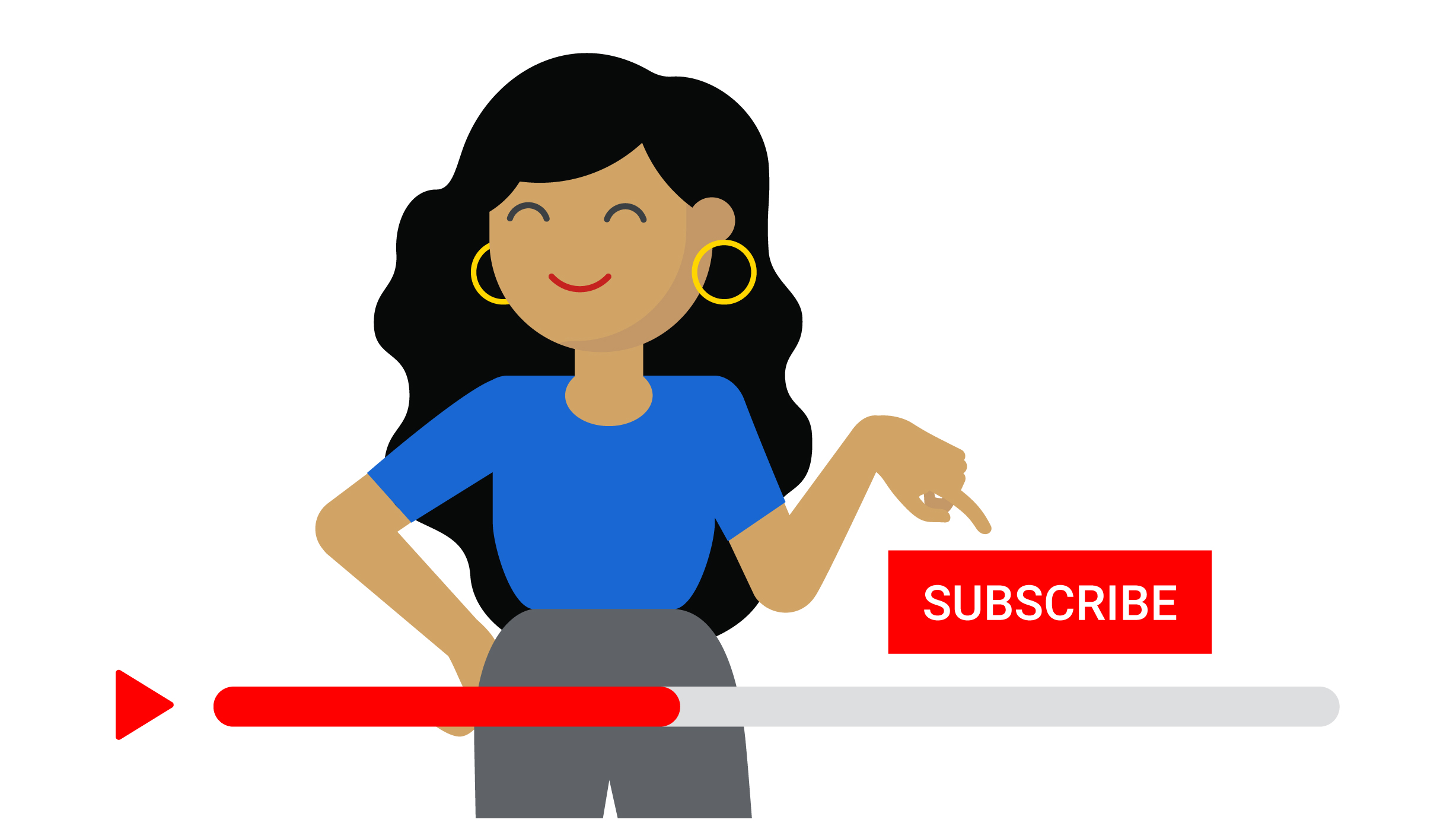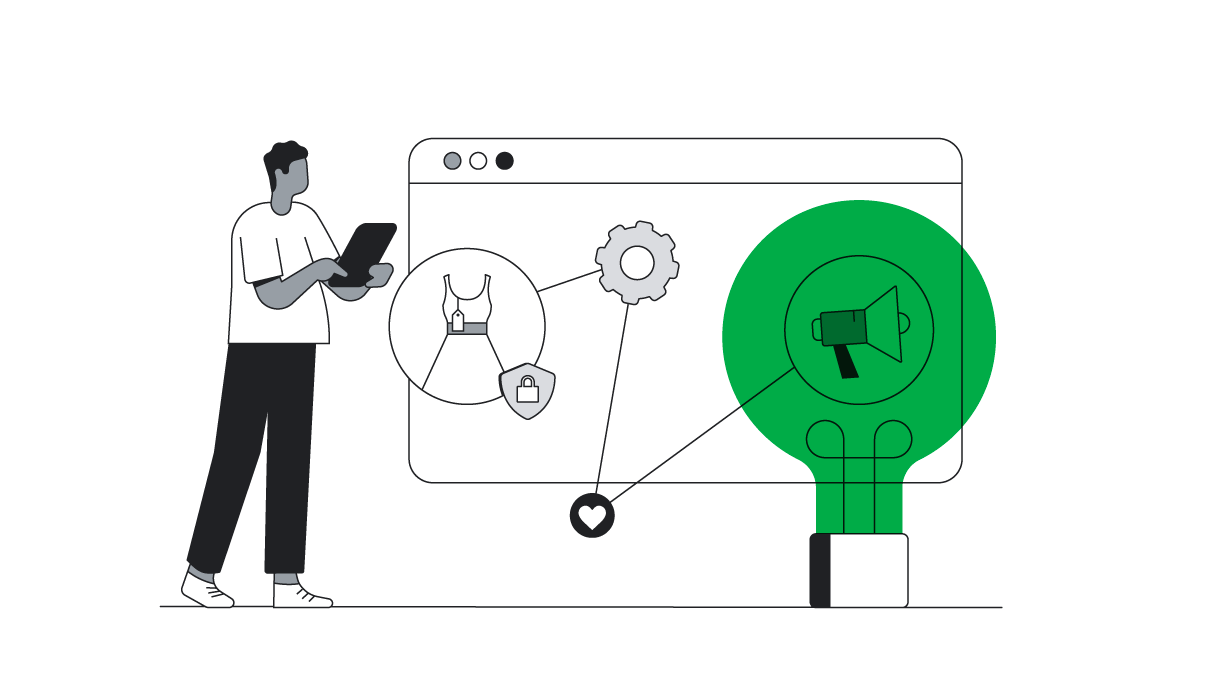Google’s Unskippable Labs team runs experiments with video ads to explore the changing nature of consumer attention. Here, the team’s global creative director, Ben Jones, and chief of staff, Cristina Caligiuri, share what they learned from recent experiments about the role of ad customisation in driving brand impact.
In an era when quintillions of bytes of data are created every day, there’s more opportunity than ever for us as creatives to craft finely tuned stories for our audiences.
As an industry, we’ve evolved beyond rational connections – if you like cars, you’ll be served a car ad – to rely instead on information, like past searches, to better understand what resonates with the audience that you are trying to reach. These information sources generate new signals, which provide a springboard to create more relevant stories.
This is good news for brand impact: Ads served with audience intent signals have 20% higher ad recall lift and 50% higher brand awareness lift than when the same ads are served with demographic signals alone.
In a world with lots of audience signals at the ready, how much customisation is necessary for your creative to be effective?
But the quest for greater relevance brings new complexities too, especially in the creative process. For one, custom video ad creative can be costly. There’s also the brand question: At what point might different versions of your ad actually dilute your message? In other words, in a world with lots of audience signals at the ready, how much customisation is necessary for your creative to be effective?
When Google announced new ways to use audience signals on YouTube nearly a year ago, we wanted to better understand the implications for storytelling. When, and how much, should brands customise their ads? We partnered with 10 brands across different categories to design a series of unique experiments to explore two questions in various regions around the world. First, what is the right amount of customisation for an audience-signal-driven story? And second, for which audience signals is it most important to customise creative?
Experimental design
Hypotheses: We began with a couple of hypotheses. We anticipated the more customisation, the better. We also thought that customisation would be more impactful for people who were experiencing life milestones, like starting a new job or buying a home.
Experiment set up; Using signal-based audience groups to test Creative customisation
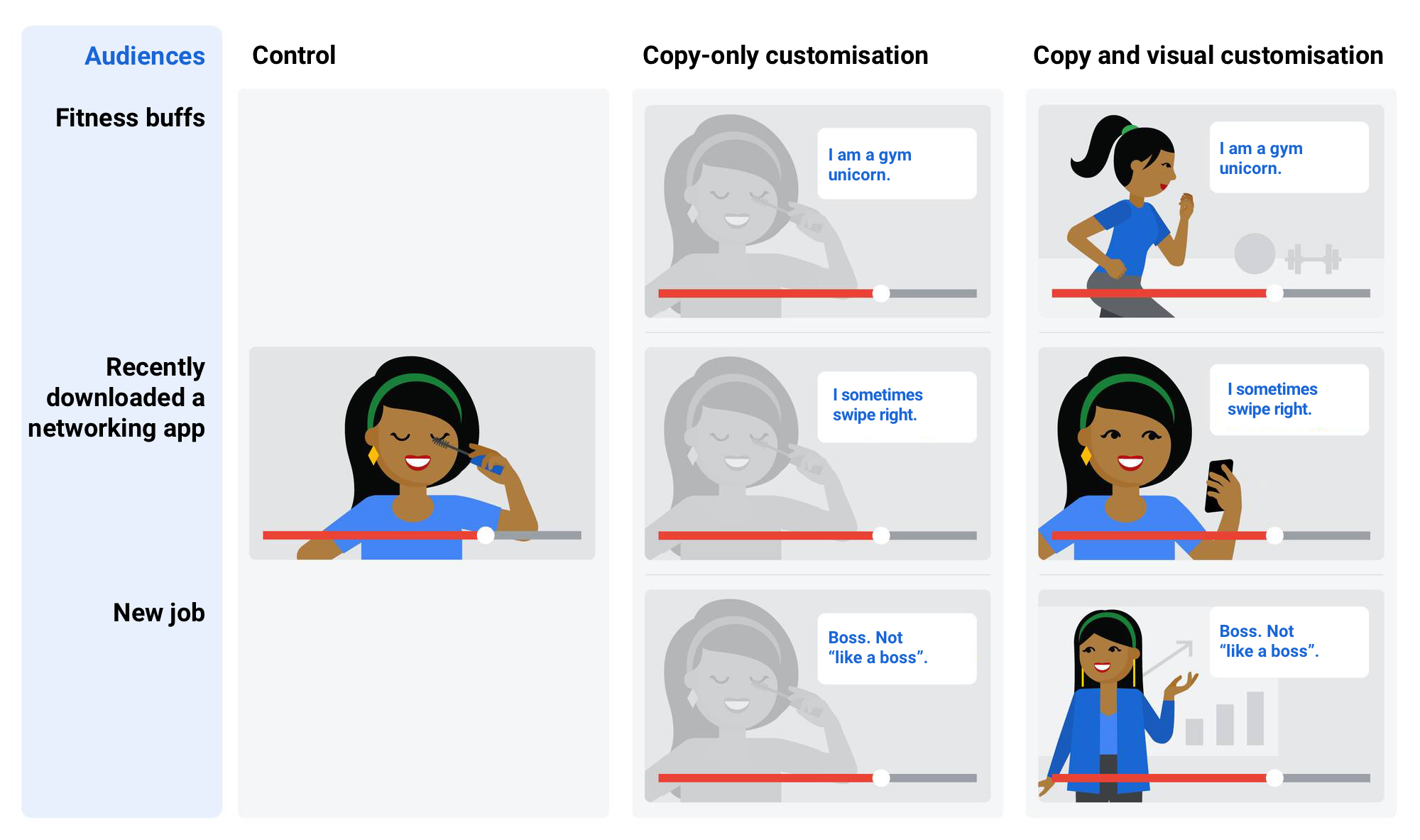
Audience parameters: For each brand’s test, we chose three audience groups to reach with customised ads. For example, for a soda brand, we aimed to reach people who are bargain hunters, people who had recently downloaded an app and people who are avid news readers.
Creative variants: Then, for each audience group within a brand test, we developed three versions of creative with varying levels of customisation: a control video, a video with copy-only customisation and a video with customised copy and visuals.
We measured results using Brand Lift with ad recall as our core success metric. In nearly all cases, we gauged impact by comparing each video’s performance against a control group, which consisted of the same three ad variations with demographic signals (for example, male 18–34) as the only targeting parameter.
Level of customisation needed
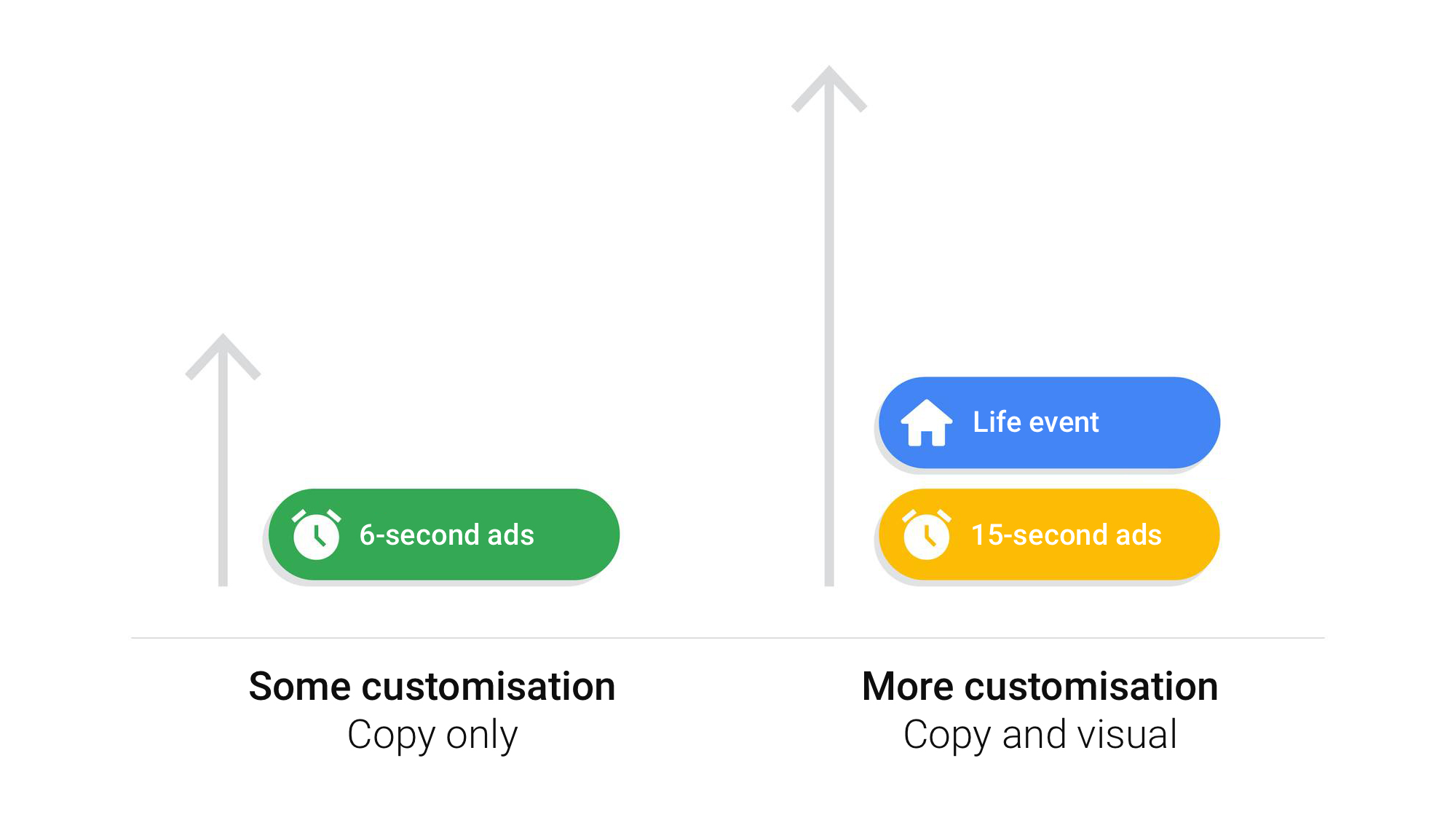
Three key patterns emerged consistently across all 10 brands that we tested, no matter the category or the country where the experiment ran. Below, we share the findings using a brand example to illustrate each. Think of these patterns as areas to explore in your own creative process.
Pattern 1: For short-form video ads, custom copy alone is enough to drive higher recall
Coty’s CoverGirl was among the brands that we tested to explore the degree of customisation required to have an impact. Using six-second ads that ran in the United States, we built generic and custom creative for three different audiences based on signals: women who recently downloaded a networking app, fitness buffs, and women interested in career development.
In nearly all instances, the ad with copy-only customisation outperformed or performed as well as the ad with customised copy and visuals. So in the case of short-form ads, the required production lift may be lighter than we expected. This held true across experiments. No matter the country, we saw that custom copy alone can help deliver more ad recall.
Pattern 2: For longer video ads, more customisation may be required
A different outcome played out, however, when we tested 15-second ads. One brand that we experimented with was Czech auto manufacturer Škoda. We tested the generic control against creatives specifically tailored to outdoor enthusiasts, people in the market for investment services, and people interested in exercise. In all three instances, the versions with customised copy and visuals drove significantly higher ad recall lift than the control ad. This held true across other brands and countries as well. So our original hypothesis – the more customisation, the higher lift in ad recall – seemed to bear out with longer stories.
Pattern 3: Video ad customisation may be particularly effective when trying to reach an audience based on a timely event
To explore the audiences for which customisation is most effective, we focused on signals relating to timely events, decisions or purchases. In these instances, we found that highly customised creative can be particularly effective. With Johnson’s Baby, for example, we tested the generic control against ads catering to three audiences rooted in intent-based signals: people who recently became a parent, working parents and women who prefer products with no parabens, sulphates, or dyes.
The videos ran in India, and in all three cases, the highly customised ads performed best – a pattern that we consistently saw across other tests. For other brands, we also tested serving creative based on life event signals, like graduation. In those instances, we again saw that highly customised ads were particularly effective, because viewers were served tailored creative that resonated with a timely event or decision.
Where we go from here
While the scenarios for which creative customisation matters most will vary by brand and product, these patterns can provide helpful clues and inspire new lines of enquiry as we continue to explore relevance in advertising. We didn’t find hard and fast rules here, but proof that creative experimentation is the best practice, particularly when it comes to determining how much to customise your video ad content. As audience signals unlock new opportunities to reach people in more relevant ways, experimentation will help you uncover specific audiences or formats where investing in customisation can have the most impact.
